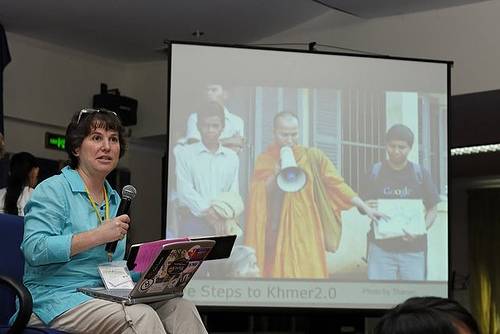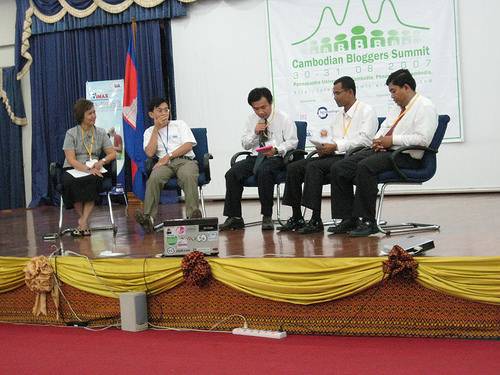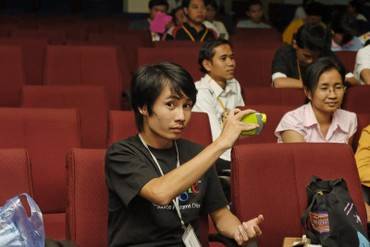By Guest Author Beth Kanter, who is a trainer, coach, and consultant to Non-profits and individuals in effective use of technology.
I have worked in the nonprofit sector for over 25 years; and in the nonprofit and technology field for the last 14 years as a trainer, coach, and consultant. I’ve helped non-profits use the web since 1993. So, when Richard raised the question to Read/WriteWeb readers: is the Web still a windfall for Non-profits?. My answer is a resounding yes!

Non-profits that integrate Web 2.0 tools and techniques effectively into their communications and programming strategies are reaping many benefits. While not necessarily raising larger dollar amounts, organizations are reaching new potential donors – particularly younger ones – and laying important ground work for the next generation of supporters.
Web 2.0 Adoption Challenges
However, when it comes to putting web 2.0 into practice in everyday nonprofit work, many (not all) non-profits face adoption challenges, as a recent report from the Overbrook Foundation indicates. Despite the popularity of Web 2.0 tools like social networks and social media, many non-profits are at best in the early stages of exploration; or at worst paralyzed by unanswered questions or concerns, a lack of knowledge or skills, concerns about control of branding or messaging, or they simply don’t view it as a priority. Many feel pressured to adopt these tools (okay, sometimes non-profit technology providers, consultants, and even bloggers like me may be creating that pressure) or feel that Web 2.0 is trend that will go the way of eight-track tapes.
Beth Kanter teaching a web 2.0 workshop in Cambodia; photo by Steve Goodman

In a recent blog discussion on the Netsquared community blog, some nonprofit techies believed that the answer is actually a change of mindset. Their point was that non-profits need to adopt a new philosophy of making their constituents the distributors of their message, and their work. To facilitate this shift, there is a need to educate more non-profits about what possibilities Web 2.0 tools offer and the practical ways to get started. It took years and small steps for many in the nonprofit sector to make the leap from fax machines to email – and it’ll be the same when taking the leap from Web 1.0 to Web 2.0.
Those that have successfully answered the “Why does it matter” question, are now beginning to wrestle with the questions: “What does it mean to our mission?” and “How do we do it right?”. And while there is a relatively small and fast growing number of non-profit techies experimenting and sharing wisdom about the tools, to learn about web 2.0 and feel comfortable, more non-profits need to experience it first hand. The first step is jumping in and getting comfortable with the tools; and carrying out low risk experiments. In the long term, non-profits should consider integrating new roles and expertise into nonprofit job descriptions – geek marketers, buzz directors, and so forth. Or think creatively about volunteer opportunities, for example recruiting a Facebook intern from a college.
Personal Fundraising Campaigns
As an older baby boomer with Gen Y media habits, for the past few years I’ve been exploring the possibilities – on my blog and in my wiki – of how non-profits can use social media to support their work. And while I’ve explored many facets of Web2.0 use and adoption by non-profits, more recently I’ve been tinkering with how to mix social media with fundraising, as well as experimenting with personal fundraising.
Less than a year ago, I launched a personal fundraising campaign on my blog using a Web 2.0 fundraising tool called ChipIn to send a young Cambodian Woman, Leng Sopharath, to college – through a program sponsored by a nonprofit, the Sharing Foundation, where I serve on the board. I was able to raise $800 for a year’s tuition and living expenses, in less than two weeks! Several weeks later, I experimented with an organizational approach to group fundraising – working with a team of 20 Sharing Foundation board members and volunteers to raise $100,000 via my blog, using a Charity Badge. It was quite an accomplishment, given that the organization has an operating budget of less than $400,000.
Cambodia Bloggers Summit
My most recent campaign used Chipin to raise over $4,000 in less than two weeks, for me to participate in the first ever Cambodian Bloggers Summit. At the same time I shared my knowledge about video blogging and Web2.0 tools, as well as provided some video blogging kits (an idea developed in a very web 2.0 way. The conference attendees were a mix of young people who were bloggers and staffers from Cambodian ngos. I learned a tremendous amount from them about the power and potential of using Web 2.0 tools.
Cyber Cambodian Panel – Cambodia Bloggers Session; photo by Beth Kanter

The Cambodia blogger campaign gave me yet another opportunity to experiment with mixing social media tools with fundraising. I learned that it is important to have some challenge grant, contest, or competition to fuel the campaign. In this case, Chipin generously offered to match contributions. I also created many different ways to participate, including small cash donations, in-kind contributions, or advice. Videoblogging fundraising pitches worked very well, including this one which resulted in a gift of Creative Commons T-shirts!
One tool that surprised me Twitter. It was an effective fundraising platform and I received donations from people who were beyond my network of “followers.” In fact, the donation that put the campaign over the top came from Twitter. However, many in Cambodia were not aware of Twitter and from an Internet Cafe with a less than robust connection, Twitter (and other web-based apps) took too long to load.
Viirak – the first video blogger from Cambodia; photo by Steve Goodman

Conclusion
Web 2.0 and social media tools offer many possibilities for non-profits to raise awareness of their work, connect with potential (younger) donors, raise money, find volunteers, and other tangible benefits. There are challenges to adoption, but as a staff member from a Cambodian NGO said to me: “We just have to be creative.” It’s a matter of low risk experimentation and personal learning in order to reap powerful benefits.
Top image: The Seeds of the Future Projects for Cambodian Bloggers










